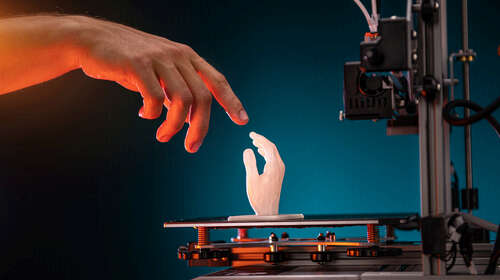
Stereolithography, or “SLA,” was actually the very first type of 3D printing developed, dating as far back as the 1860s with the “photosculpture method” before being realized as a proper technology in the 1980s. SLA 3D printers utilize a kind of prototypical plastic called resin, which is selectively cured and hardened into a solid plastic shape.
The liquid resin used in this process is highly receptive to ultraviolet rays; all it takes is a brief exposure to a UV beam, which solidifies it. An SLA printer utilizes such a UV beam, firing off controlled bursts into a pool of resin in the shape of the object you want to make. As the beam fires, the resin solidifies, and the plastic mold is lifted up and out of the pool. Just wash off the excess gunk afterward, and there’s your model.
Depending on the complexity of the model you’re making and the specs of the SLA printer you’re using, special support structures may be automatically hardened into the resin along with the mold itself to hold everything up. After the curing process, you can pluck the support structures right off. Thanks to the precision of the UV beam, this process can be used to make very geometrically complicated shapes, like a model of a human heart or an imprint of someone’s teeth for making dentistry aids.

